Significance
By the mid-19th century, Renhai Temple had already become an important religious center for the Hakka people scattered amongst the thirteen villages that make up today’s Zhongli, Pingzhen, and Yangmei Districts. During the Japanese rule, the government forcibly dismantled most temples as part of its Japanization policy. Renhai Temple was the only traditional temple in the Zhongli area that survived the assimilation attempt. It thus grew into the principal religious center of the area. Near the temple is a paper burner known as the Sacred Script Pavilion. The burner is a manifestation of the rich history and unique culture of the Hakka people, who mix an agrarian lifestyle with a strong emphasis on education and literacy. During its most recent renovation in the 20th century, washed granolithic finishes and Baroque decorative elements that reflected the architectural trends at the time were added. Today, the paper burner is a reminder of the cultural fusion resulting from the Japanese rule.
History
Constructed in 1826, Renhai Temple is the oldest temple in Zhongli District, Taoyuan City. The temple is also called Xinjie, or New Street, Temple by local residents. Before the temple was constructed, Zhongli District had been a single administrative zone. Sometime during the 19th century, it was split up into two areas known as New Street (xīnjiē) and Old Street (jiùjiē). As the New Street area prospered and its population increased, the residents of the thirteen villages of Zhongli, Pingzhen, and Yangmei districts collaborated to build a temple in the New Street area. The temple first enshrined only Guanyin (the Goddess of Mercy), but as trade activity increased in the area, local residents petitioned for Mazu of Chaotian Temple, Beigang District to bestow her divine presence and blessings on Zhongli District. In 1828, a Mazu statue was consecrated and brought to Renhai Temple, where it became the main deity of the temple. When Japanization began in 1936, local chief commander Miyazaki Naokatsu dismantled most of the temples in Zhongli District. Renhai Temple was preserved and spared from destruction because it had once helped provide accommodation and care for Prince Kitashirakawa Yoshihisa (1847-1895), who headed the Japanese invasion of Taiwan and became ill on his march southward through the island. Renhai temple has undergone a total of five renovations. The four-column gate (shānmén) built in 2009 is now a significant landmark in Zhongli City. Fifty meters away from the temple is a paper burner, The Sacred Script Pavilion, constructed in the late 19th century. The burner was renovated in the 20th century to include the washed granolithic finish and Baroque ornamentation that were fashionable at the time.
Special Features

1The Three-Hall Architectural Layout of Renhai Temple Renhai Temple is an example of traditional Southern Chinese architecture. The four-column main gate in front of the temple with its eye-catching double-hipped roof is a landmark in Zhongli District. A flaming pearl perched at the center of the ridge is flanked by two dragons, a symbol that the fire is contained and can cause no harm. The temple square behind the main gate leads to a three-hall temple, consisting of the Sanchuan hall, the main hall, and the back hall. The three structures are linked by east and west wings that run the length of the temple grounds and serve to enclose the entire compound. The roof ridge of the Sanchuan hall is decorated with jiǎnnián (a mosaic-like cut-and-paste porcelain art form) representations of two dragons as well as the three deities of happiness, fortune, and longevity. The Xi Shi ridge (a second, highly decorated raised roof ridge added above the actual roofline for ornamental purposes, named for one of the four great beauties of ancient China) is also covered in magnificent jiǎnnián decoration. The roof ridge of the main hall is likewise guarded by two dragons.
Renhai Temple is an example of traditional Southern Chinese architecture. The four-column main gate in front of the temple with its eye-catching double-hipped roof is a landmark in Zhongli District. A flaming pearl perched at the center of the ridge is flanked by two dragons, a symbol that the fire is contained and can cause no harm. The temple square behind the main gate leads to a three-hall temple, consisting of the Sanchuan hall, the main hall, and the back hall. The three structures are linked by east and west wings that run the length of the temple grounds and serve to enclose the entire compound. The roof ridge of the Sanchuan hall is decorated with jiǎnnián (a mosaic-like cut-and-paste porcelain art form) representations of two dragons as well as the three deities of happiness, fortune, and longevity. The Xi Shi ridge (a second, highly decorated raised roof ridge added above the actual roofline for ornamental purposes, named for one of the four great beauties of ancient China) is also covered in magnificent jiǎnnián decoration. The roof ridge of the main hall is likewise guarded by two dragons.
2The Plaques in the Main HallDue to serious deterioration and damages cause by weathering, Renhai Temple underwent restorations in 1870, with Guo-Hua Wang (an accomplished scholar of that era) in charge of the execution. When the repairs were completed the following year, a plaque with the inscription “Long Live Our Country” was given to the temple. The other plaque in the main hall, “Mercy and Happiness to All,” was presented to the temple by local believers.
3The Sacred Script Pavilion

 Approximately 50 meters to the left of Zhongli Renhai Temple is a paper burner called the Sacred Script Pavilion. The burner was constructed in the late 19th century and renovated in the 20th century. At the time of the temple’s original construction, the New Street area was the busiest part of Zhongli District, attracting many scholars and students. The Hakka people constructed the Sacred Script Pavilion beside Renhai Temple as a place to burn used books and papers in a symbol of reverence for literature and writing. The burner is over four meters tall and is divided into three sections. The top section of the hexagonal structure has the words “sacred script” carved into its front side. The swallowtail points on the circular roof cap rise so high that they give the impression of a hat with a high brim. On the very top of the burner is a vase-like ornament. The middle section of the burner is four-sided with an oval opening in one face; the other three sides are adorned with complicated moldings and stylized bat decorations, because the word “bat” (biānfú) in Mandarin sounds like the word for “happiness” (fú). The burner’s bottom section is octagonal and its washed granolithic finish and Baroque-style ornamental ovals (sometimes called “abalone decorations” in Chinese due to their appearance) were added during the Japanese period in accordance with architectural trends in Japan at the time. The burner is notable for its Baroque elements, which are rarely found in Taiwan. It is an example of the cultural fusion that occurred under Japanese rule. The Sacred Script Pavilion is now listed as one of the municipal historical sites of Taoyuan City.
Approximately 50 meters to the left of Zhongli Renhai Temple is a paper burner called the Sacred Script Pavilion. The burner was constructed in the late 19th century and renovated in the 20th century. At the time of the temple’s original construction, the New Street area was the busiest part of Zhongli District, attracting many scholars and students. The Hakka people constructed the Sacred Script Pavilion beside Renhai Temple as a place to burn used books and papers in a symbol of reverence for literature and writing. The burner is over four meters tall and is divided into three sections. The top section of the hexagonal structure has the words “sacred script” carved into its front side. The swallowtail points on the circular roof cap rise so high that they give the impression of a hat with a high brim. On the very top of the burner is a vase-like ornament. The middle section of the burner is four-sided with an oval opening in one face; the other three sides are adorned with complicated moldings and stylized bat decorations, because the word “bat” (biānfú) in Mandarin sounds like the word for “happiness” (fú). The burner’s bottom section is octagonal and its washed granolithic finish and Baroque-style ornamental ovals (sometimes called “abalone decorations” in Chinese due to their appearance) were added during the Japanese period in accordance with architectural trends in Japan at the time. The burner is notable for its Baroque elements, which are rarely found in Taiwan. It is an example of the cultural fusion that occurred under Japanese rule. The Sacred Script Pavilion is now listed as one of the municipal historical sites of Taoyuan City.
Reminders
The annual pilgrimage (ràojìng) of Renhai Temple takes place sometime during the tenth to twelfth months of the lunar calendar, which are the offseason for farming. After visiting Chaotian Temple in Beigang, the pilgrimage traverses thirteen local villages. It is the biggest religious event in the Zhongli area.
Panoramic
Directions